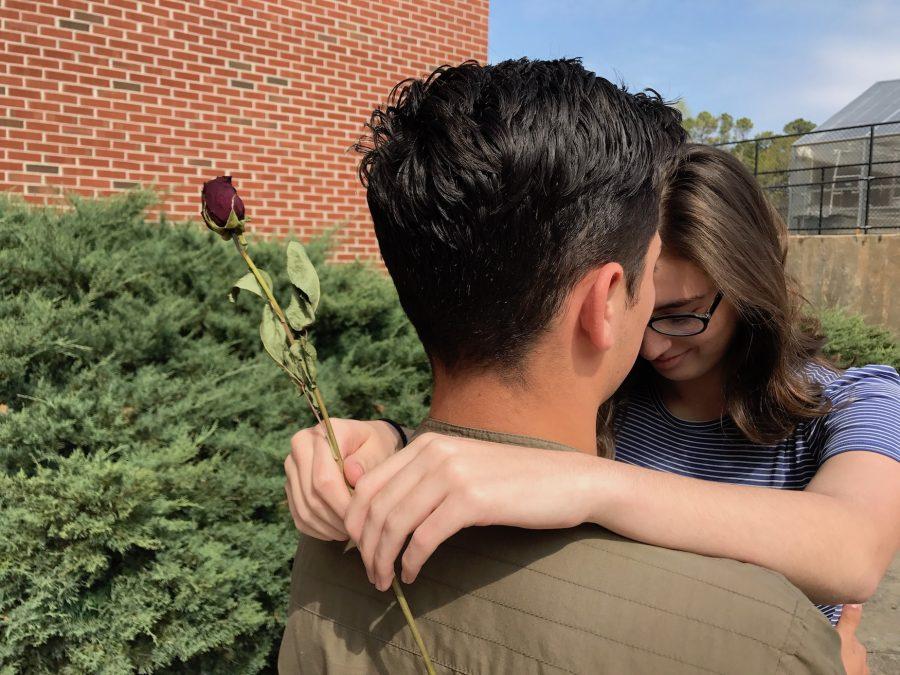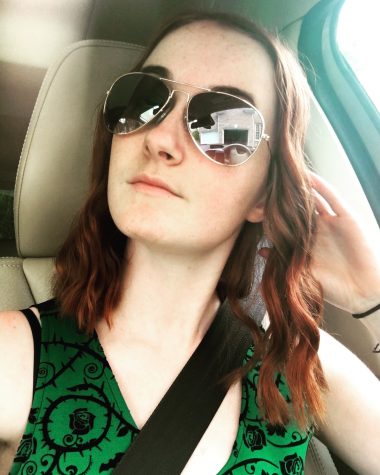Disney’s Beauty and the Beast successfully revamps a “tale as old as time”
Two NC students find inspiration in symbols and songs from Disney’s classic Beauty and the Beast.
March 20, 2017
Walt Disney Studios transported its viewers back to 1991 with its release of the live-action remake of Beauty and the Beast on Friday, March 17, ushering in a new era of Disney nostalgia.
The film, pulling directly from the original animation, tells the story of the bookish Belle (Emma Watson) who saves her father’s life by taking his place as the prisoner of former prince (Dan Stevens) cursed with a beastly appearance. To return the Beast and a host of cavorting characters in the form of the candelabra Lumiere (Ewan McGregor), the clock Cogsworth (Sir Ian McKellen), the teapot Mrs. Potts (Emma Thompson), and more to human form, both the former prince and Belle must find true love while fending of the boorish Gaston (Luke Evans) and a mob of angry villagers.
The remake sticks closely to the original storyline, adding embellishments on Belle’s mother and Gaston’s backstory that allow viewers to find excitement in further development of a childhood story.
Disney also strives to connect this adaptation with both history and the present, creating by far the most compelling addition. The Beast’s castle clearly resembles the palace of Versailles, and the costume and makeup sense reflect royal fervor, linking him to famed French monarch Louis XIV. Belle’s provincial life and the slight look at eighteenth century Paris also provide glimpses into the real history behind the story.
Still, Beauty and the Beast does not stop at brief allusions to history; the movie cautions the current age. The ideas of mob mentality — the film’s “The Mob Song” includes the noteworthy line, “We don’t like what we don’t understand and in fact it scares us” — as shown through the town’s angry assault on the Beast’s castle, and the folly of judging a book by its cover represent morals that still have a place in today’s dialogue. Furthermore, by including a racially diverse cast, a bisexual character, and a major show of female empowerment, Disney hearkens to a new generation of societal values without getting left behind in 1991.
Even Evans’ Gaston acts as a clear warning for a new generation of girls: he mirrors the downfall of patriarchal expectations and represents all aspects of an abusive relationship, from gaslighting to psychotic tendencies. The casting for the brute makes the moral that much more obvious, with Evans boasting not only a stellar voice but also an impressive ability to convince the audience of his malice.
Disney also relies on a star-studded supporting cast to round the film out. McGregor’s Lumière lights up the theater, providing a rousing rendition of the famous “Be Our Guest” and one of the only French accents in the movie — ah, the common downfall of English-speaking French films. McKellen and McGregor work well as the film’s metaphorical Rosencrantz and Guildenstern, driving the plot and the comedy along with perfect timing. Furthermore, Disney hit the jackpot with Thompson’s Mrs. Potts; from sassy comments to the motherly love of the titular song, Thompson fits the musical landscape to a tee.
Stevens and Watson make a near-perfect Beast and Belle, as well. Though Stevens feels disjointed from his Beast, as for the majority of the movie digitized hair hides his face, his acting chops impress nonetheless, and the character arc comes across clearly. Watson looks like a dream as the headstrong Belle and meets the high acting expectations placed upon her, though she falters slightly in vocal ability as her songs sound canned at times. Nevertheless, the dynamic between the two draws laughter, sadness, and love that captures the essence of one of Disney’s most classic tales.
Disney legend Alan Menken modernized the classic score with fresh verses and songs galore. The opening song “Belle” received an update through added dialogue, and Gaston’s self-titled number also benefits from numerous new verses and a dance break. The gorgeous “Days in the Sun” and “How Does a Moment Last Forever” add to the emotional backstories of each character, giving them life beyond the screen. Furthermore, Menken finally gives the Beast a dramatic tune of his own in “Evermore.” The new music advances the storyline swiftly and allows the audience further insight into each compelling character.
Beyond the story and casting, Disney’s visual prowess comes across as usual. Each setting, from the provincial town to the towering chateau, acts as eye candy for viewers of any age, added to by the larger-than-life costumes and makeup. Costume designer Jacqueline Durran mirrors each costume from the original film, adding updates and embellishments, while the makeup adds to the grandness of the tale. The visual effects used to transform Stevens into the titular Beast represent the highest quality of computer-generated design available, showing how much technology has changed since the debut of the original film. Only Disney could pull off such skilled grandeur with ease.
Walt Disney succeeded in revamping one of their most famous films with only slight hiccups, proving that Beauty and the Beast will forever be a tale as old as time.
The Chant’s Grade: A-






